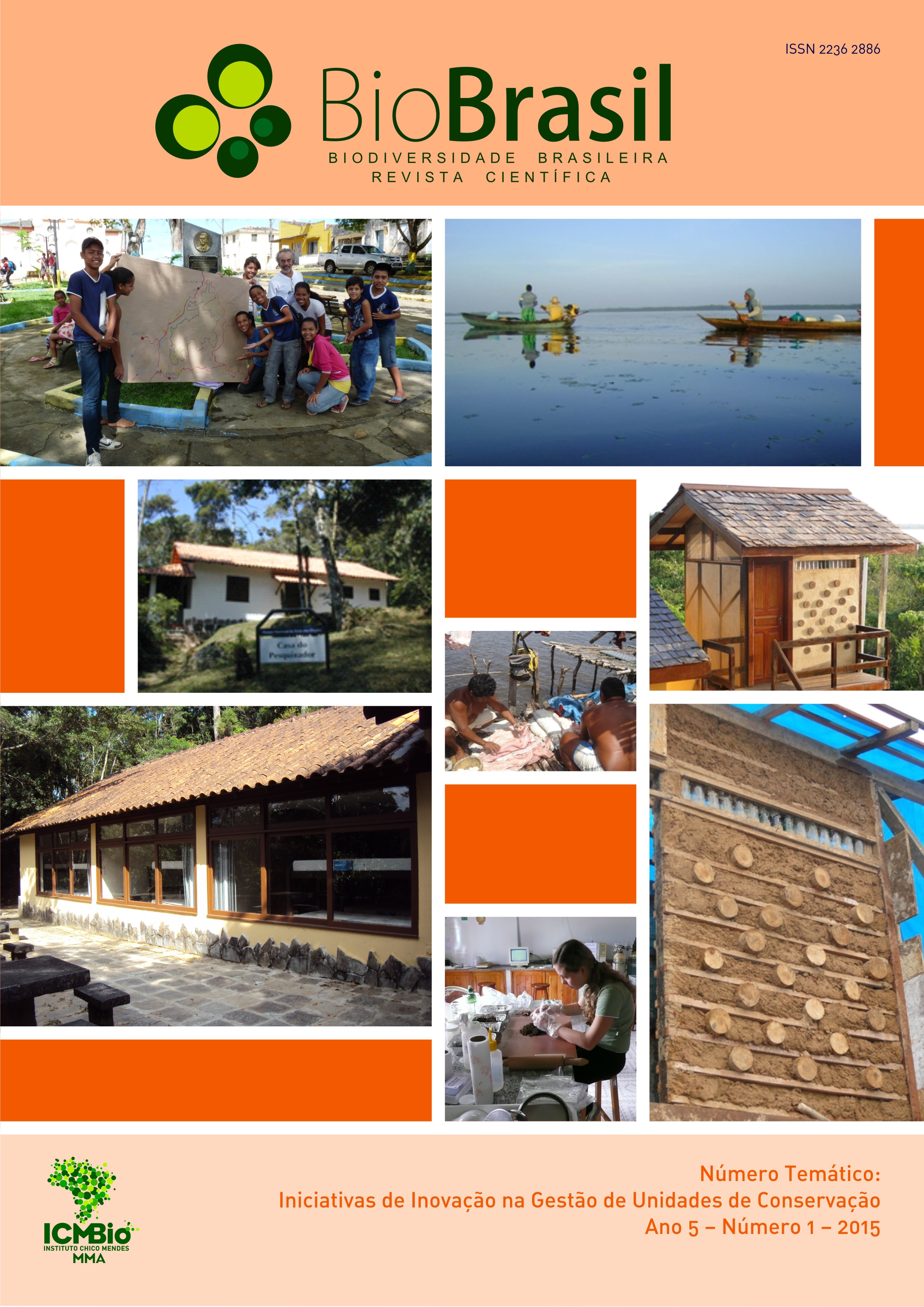Bioconstrução na Reserva Biológica do Lago Piratuba: sustentabilidade e tecnologias apropriadas
DOI:
https://doi.org/10.37002/biodiversidadebrasileira.v5i1.474Keywords:
adequate technologies, bioconstruction, permacultureAbstract
Sustainability and the use of appropriate technologies underpin the Piratuba Lake Biological
Reserve management. In this sense, one of the strategic objectives of the protected area is the consolidation
of the infrastructure based on permaculture and bioconstruction. Thus, the Administrative Office of Piratuba Lake Biological Reserve in Cutias/AP was designed and built with a different design, in order to establish a reference of sustainable constructions in the region. The technology used in the constriction uses land as a main raw material, taking into account the abundance of this material, the low environmental impact due the reduced processing and the potential to generate autonomy for people. The technologies used for construction with land were: soilcement foundations, superadobe walls, fiber and soilcement panels and
natural plastering. Also, were executed: wooden structure; roof chip; ecological sanitation system with dry
toilets;septic tank with banana and ferrocement cistern for rainwater storage. Being the first building in
Amapá State to use such technologies, a specialized consultancy company was hired for technical advice,
workforce training and execution supervision. The capacitation for this job included the construction company
workers itself, residents from Cutias and from the inside and surroundings of the protected area. It was critical
for the success of the experience having a reciprocal process in which participants shared and expanded
knowledge and had an important role in the decisions taken during the work. Although it was hired a
company that had never worked with the specific techniques used the results were indeed satisfying mainly due to the technical support offered by consultancy. This construction is a pioneering example in the region and shows that buildings can serve as practical examples of environmental sustainability, opportunities for dissemination of appropriate technologies and development of educational activities, being an innovative way of implementation of protected areas.
References
Brasil. 2000. Lei nº 9.985, de 18 de julho de 2000. Regulamenta o art. 225, § 1°, incisos I,II, III e VII da Constituição Federal, institui o Sistema Nacional de Unidades de Conservação da Natureza e dá outras providências. Diário Oficial da União. (Acesso em 02/08/2014).
Cal-Earth. California Institute Earth Art and Architecture. About Nader Khalili. California Institute Earth Art and Architecture. . (Acesso em 19/02/2015). Enviro Loo. 2014. Enviro Loo. http://www.enviro-loo.com/> (Acesso em 02/08/2014).
Ministério do Meio Ambiente. Secretaria Executiva. Secretaria de Biodiversidade e Florestas. 2009. Programa Áreas Protegidas da Amazônia (ARPA - Fase II): Documento de Programa do Governo Brasileiro. Versão para consulta pública. MMA/SECEX/SBF. 80p.
Mollison, B. & Holmgren, D. 1978. Permaculture One: a perennial agriculture for human settlements. Transworld. 130p. Mollison, B. & Slay, R.M. 1998. Introdução à permacultura. MA/SDR/PNFC. 204p.
Pinheiro, H.P.; Soares, A. & Prato, T. 2008. Memorial descritivo para construção e consolidação de unidades de conservação: base de apoio e monitoramento de Cutias/AP, Reserva Biológica do Lago Piratuba. 10p.
Prompt, C.H. & Pinha, P.R.S. 2011. Base administrativa da Reserva Biológica do Lago Piratuba: edificação com critérios de sustentabilidade no Estado do Amapá. In: Anuario de Investigación del 11º Seminario Iberoamericano de Construcción com Tierra. FADU. México. CD-ROM.
Soares, A. 2007. Soluções sustentáveis: construção natural. Mais Calango Editora. 64p
Downloads
Published
Issue
Section
License
Copyright (c) 2021 Biodiversidade Brasileira - BioBrasil

This work is licensed under a Creative Commons Attribution-NonCommercial-NoDerivatives 4.0 International License.
Os artigos estão licenciados sob uma licença Creative Commons Atribuição-NãoComercial-SemDerivações 4.0 Internacional (CC BY-NC-ND 4.0). O acesso é livre e gratuito para download e leitura, ou seja, é permitido copiar e redistribuir o material em qualquer mídia ou formato.





 v3-3-0-3-2-1-8-release.27
v3-3-0-3-2-1-8-release.27